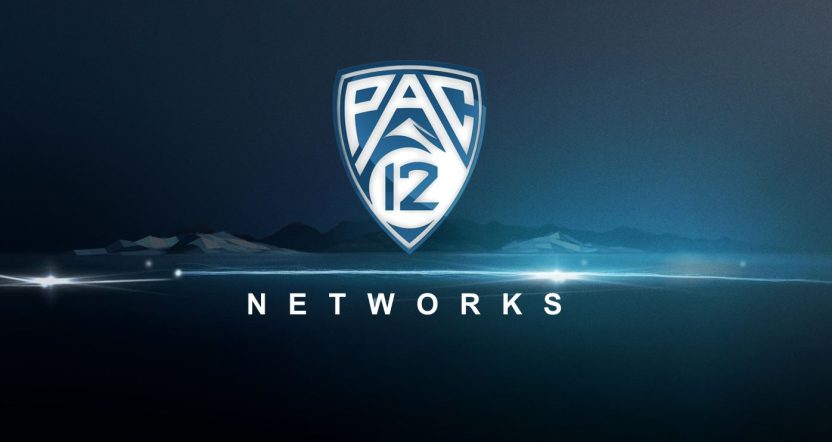When the Pac-12 Networks launched in 2012, in many ways it was ahead of its time. It saw the need for consumer customization by creating six regional spinoff channels, it produced dozens of sports and in particular many Olympic and women’s sports, led a push to localize production at the schools, and even distributed internationally in Australia and Canada.
The Network is likely on its last legs with the apparent dissolution of the Pac-12 Conference months away, so what is the legacy of the Network? And could different decisions at the Network in the last decade have saved the conference?
“Had the Pac-12 Network scaled, right, and had gotten the fees it wanted, the Pac-12 would have probably approached some of the issues over the past couple years with the upcoming rights fee negotiations and other things differently,” said Patrick Crakes, a former Fox Sports executive, and media consultant. When Apple earlier this year put in a below market bid for TV rights, with no other real bidders, it spelled the end for the historic conference.
Experts agree the biggest mistake the Network made was to go it alone without a media partner. The ACC and SEC Networks are owned by ESPN, while the Big Ten Network is majority owned by Fox Corp. Having a media partner allowed the new conference channels to be bundled with other channels and sold collectively to cable and satellite distributors (and more recently digital ones like YouTube TV).
While the Pac-12 Networks have about 15 million subscribers, the Big Ten Network has about 50 million, and the SEC Network more than that. That means substantially more revenue to the media-aligned networks and conferences.
But under then commissioner Larry Scott, the Pac-12 didn’t sign a media partner, convinced in part digital distribution would soon be all the rage (they were right but too early and it still would not negate the need for a media partner).
“I remember seeing Larry Scott sometime in 2013, 2014 and I said,` Larry, what’s the news? What’s the news from Pac-12?’” Crakes said. “He’s like ‘Facebook’s going to own everything.’ I mean, literally, it’s Facebook this it’s Facebook that, I’m not exaggerating. And they are a proxy for everybody else” meaning other digital players like Apple and Amazon.
The Pac-12 Networks (six regional ones and the mother ship) aired 850 events a year, which meant broadcasting a large number of women’s sports at a time when they struggled to get coverage
“To have 850 events broadcast to an audience during the time when you have to recall when the Pac-12 Network launched, there wasn’t ESPN+, there wasn’t Peacock, there wasn’t Paramount+, out in the marketplace,” said William Mao, senior vice president media rights consulting at Octagon. “And so from a live streaming perspective, that market hadn’t gotten to a place where that was an option, now where you see a lot of content, finding a home there. And so in the absence of that, when the network was launched, almost 12 years ago, this was a first in many ways to super serve, not only the conference, but specifically hyper serve the specific fan bases by region.”
That led the Networks to push the schools to invest in local production capabilities, meaning expensive TV trucks didn’t have to constantly be deployed through the conference’s geographic area.
“They were kind of pushing a high level of production standards down into their institutions, which is something that we are all benefiting from now, when it comes to the production and distribution and broadcast of college sporting events,” Mao said.
The Pac-12 has been in melt down mode since before the football season, with all but two schools–Oregon State University and Washington State University–announcing plans to move to Power 5 conferences with more lucrative media deals. The two remaining are litigating against the others over who gets to decide what happens to the conference and its intellectual property.
A possibility is the two schools merge with the Mountain West Conference, which ironically at one time had its own channel. Hypothetically the conference could retain the Pac-12 name and the Network, though clearly it would have to re-negotiate distribution deals for lower fees.
“No decision has been made about the future of the PAC-12 Networks,” a Pac-12 source said. “A decision about the networks will necessarily follow a decision by WSU and OSU on the future of the Conference.”
That said, the regional sport network universe is shrinking and facing economic turmoil. So even if WSU and OSU emerge with Pac-12 name rights and reverse merge with the MWC, it’s tough to see a future for the Network, at least its linear version.
“Just focusing on it from a pure volume perspective, there isn’t enough content to power those networks, which I have to presume is part of the obligation that those networks have to their carriage providers,” Mao said.
The most likely scenario is the Pac-12 Networks expire once the bulk of the conference flees next year, giving the outlet only, appropriately enough, a 12-year run.
“They tried a lot of things that other new college conference networks haven’t tried,” Mao said of the media concern’s legacy. “For example, they were very active across a lot of different commercial levers internationally. And so, Pac-12 Networks was available via DAZN Canada, via Seven in Australia. I was part of the team at YouTube that did the first Pac-12 Networks 24/7 live streaming deal on YouTube.
“And so they were trying to serve not only their audience in their footprint, but really trying to grow their audience internationally through the establishment of this Network. So, when I think about it, and I may be a little biased, I do try to think about it from the perspective of all of the things that they were trying to do that were positive features of the network that were differentiated when it was established.”





